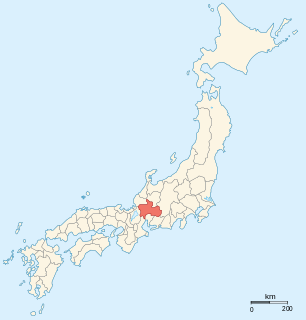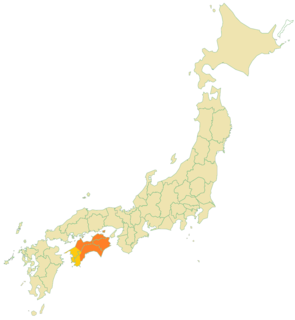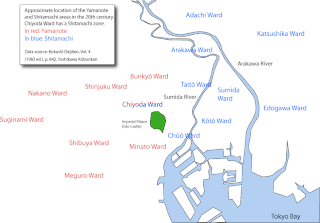 W
WThe dialects of the Japanese language fall into two primary clades, Eastern and Western, with the dialects of Kyushu and Hachijō Island often distinguished as additional branches, the latter perhaps the most divergent of all. The Ryukyuan languages of Okinawa Prefecture and the southern islands of Kagoshima Prefecture form a separate branch of the Japonic family, and are not Japanese dialects, although they are sometimes referred to as such.
 W
WThe Akita dialect is a Japanese dialect spoken in Akita Prefecture.
 W
WThe Bingo dialect is a Japanese dialect spoken in the Bingo Region of eastern Hiroshima Prefecture. It is part of the Chūgoku dialect group.
 W
WThe Chūgoku dialect is a group of the Japanese dialects spoken in most of the Chūgoku region and in the northwestern Kansai region. It may be separated into two groups according to the form of the copula.copula ja group Aki also known as Hiroshima dialect Bingo dialect Fukuyama dialect (Fukuyama) Okayama dialect Yamaguchi also known as Chōshū dialect copula da group Iwami dialect ja is also used in western Iwami region. Inshū, also known as Tottori dialect Tajima dialect Tango dialect
 W
WThe Gunma dialect is a Japanese dialect spoken in Gunma Prefecture.
 W
WThe small group of Hachijō dialects , natively called shima kotoba , depending on classification, are either the most divergent form of Japanese, or comprise a branch of Japonic. Hachijō is currently spoken on two of the Izu Islands south of Tokyo as well as on the Daitō Islands of Okinawa Prefecture, which were settled from Hachijō-jima in the Meiji period. It was also previously spoken on the island of Hachijō-kojima, which is now abandoned. Based on the criterion of mutual intelligibility, Hachijō may be considered a distinct Japonic language.
 W
WHakata dialect is a Japanese dialect spoken in Fukuoka city. Hakata dialect originated in Hakata commercial district, while a related Fukuoka dialect was spoken in the central district. Hakata dialect has spread throughout the city and its suburbs. Most Japanese regard Hakata dialect as the dialect typical of Fukuoka Prefecture, so it is sometimes called Fukuoka-ben.
 W
WThe Hichiku dialect is a group of the Japanese dialects spoken in western Kyushu. The name Hichiku (肥筑) is constructed by extracting a representative kanji from Hizen (肥前), Higo (肥後), Chikuzen (筑前) and Chikugo (筑後), names of old provinces in there.
 W
WThe Hokuriku dialect is a Japanese dialect group spoken in Hokuriku region, consists of northern Fukui Prefecture, Ishikawa Prefecture, Toyama Prefecture, and Sado Island in Niigata Prefecture. Mainland Niigata dialect is classified into Tōkai-Tōsan dialect and Tōhoku dialect and southern Fukui dialect is classified into Kansai dialect.
 W
WThe Hōnichi dialect is a group of the Japanese dialects spoken in eastern Kyushu. It is closer in some ways to Western Japanese that it is to other Kyushu dialects. The name Hōnichi (豊日) is constructed by extracting a representative kanji from Buzen (豊前), Bungo (豊後) and Hyūga (日向), names of old provinces there.
 W
WThe Ibaraki dialect is a Japanese dialect spoken in Ibaraki Prefecture. It is noted for its distinctive use of the sentence-ending particles べ be and っぺ ppe and an atypical intonation pattern that rises in neutral statements and falls in questions. It is also noted for its merging of certain vowels, frequent consonant voicing and a relatively fast rate of speech.
 W
WThe Inshū dialect is a Japanese dialect spoken in the Inaba region of eastern Tottori Prefecture. It may also be called the Tottori dialect, though this is not to be confused with other dialects that are also spoken in the prefecture, namely the Kurayoshi and West Hōki dialects. It is considered an East San’in dialect of the wider Chūgoku dialect group. In parts of northern Hyōgo Prefecture that neighbour Tottori, specifically in the Tajima region, a similar dialect to the Inshu dialect is spoken. It bares many similarities to its close relative, the Kurayoshi dialect of central Tottori but retains some notable differences.
 W
WThe Kaga dialect is a Japanese Hokuriku dialect spoken south of Kahoku in the Kaga region of Ishikawa Prefecture.
 W
WThe Satsugū dialect , often referred to as the Kagoshima dialect , is a group of dialects or dialect continuum of the Japanese language spoken mainly within the area of the former Ōsumi and Satsuma provinces now incorporated into the southwestern prefecture of Kagoshima. It may also be collectively referred to as the Satsuma dialect, owing to both the prominence of the Satsuma Province and the region of the Satsuma Domain which spanned the former Japanese provinces of Satsuma, Ōsumi and the southwestern part of Hyūga. Although not classified as a separate language, the Satsugū dialect is commonly cited for its mutual unintelligibility to even its neighboring Kyūshū variants. It shares over three-quarters of the Standard Japanese vocabulary corpus and some areal features of Kyūshū.
 W
WThe Kansai dialect is a group of Japanese dialects in the Kansai region of Japan. In Japanese, Kansai-ben is the common name and it is called Kinki dialect in technical terms. The dialects of Kyoto and Osaka are known as Kamigata dialect , and were particularly referred to as such in the Edo period. The Kansai dialect is typified by the speech of Osaka, the major city of Kansai, which is referred to specifically as Osaka-ben. It is characterized as being both more melodic and harsher by speakers of the standard language.
 W
WThe Kantō dialects are a group of Japanese dialects spoken in the Kantō region. The Kantō dialects include the Tokyo dialect which is the basis of modern standard Japanese. Along with the Tōhoku dialect, Kantō dialects have been characterized by the use of a suffix -be or -ppe; Kantō speakers were called Kantō bei by Kansai speakers in the Edo period. Eastern Kantō dialects share more features with the Tōhoku dialect. After the Pacific War, the southern Kantō regions such as Kanagawa, Saitama, and Chiba prefectures developed as satellite cities of Tokyo, and today traditional dialects in these areas have been almost entirely replaced by standard Japanese.
 W
WKesen dialect or Kesen is a Japanese dialect spoken in Kesen County, Iwate Prefecture, Japan.
 W
WThe Mino dialect is a Japanese dialect spoken in the southern area, made up of the former area known as Mino Province, of Gifu Prefecture, Japan. It is also referred to as the Tōnō dialect by residents of the Tōnō region of the prefecture, which is the eastern part of the former province. It is sometimes also referred to as the Gifu dialect, but that can sometimes include Hida dialect, which is in the northern part of Gifu Prefecture.
 W
WThe Nanbu dialect is a Japanese dialect spoken in an area corresponding to the former domains of Morioka and Hachinohe in northern Tohoku, governed by the Nanbu clan during the Edo period. It is classified as a Northern Tohoku dialect of the wider Tohoku dialect group.
 W
WThe Narada dialect was a Japanese dialect spoken in the village of Narada, Hayakawa, located in Yamanashi Prefecture. Having formerly been isolated for centuries from surrounding areas, the dialect was considered a language island within the Tokai-Tosan dialect group, possessing various traits unique to Narada.
 W
WThe Northern Izu Archipelago dialects are dialects of Japanese spoken on the inhabited islands north of Mikura-jima in the Izu Archipelago, part of the Tokyo Metropolitan Area. The various dialects are classified as Eastern Japanese, and are most similar to the Izu dialect of mainland Honshū, but as islands have also developed unique traits which can vary considerably from island to island. On islands with large numbers of migrants from the mainland, such as To-shima, there is increasing standardisation of speech towards the common standard.
 W
WOkinawan Japanese is the Japanese language as spoken by the people of Okinawa Islands. Okinawan Japanese's accents and words are influenced by the traditional Okinawan and Kunigami languages. Okinawan Japanese has some loanwords from American English due to the United States administration after the Battle of Okinawa. Okinawan Japanese is a Japanese dialect, unlike the Northern Ryukyuan Okinawan and Kunigami languages.
 W
WThe Shikoku dialects are a group of the Japanese dialects spoken on Shikoku.
 W
WThe Shizuoka dialect is a Japanese dialect spoken in Shizuoka Prefecture. In a narrow sense, this can refer purely to the Central Shizuoka dialect, whilst a broader definition encompasses all Shizuoka dialects. This article will focus on all dialects found in the prefecture.
 W
WThe Tochigi dialect is a Japanese dialect spoken in Tochigi prefecture. It is classified along with the Ibaraki dialect as an East Kanto dialect, but due to possessing various shared phonological and grammatical features with the neighbouring Fukushima dialect to the north, many scholars consider it instead as part of the wider Tohoku dialect. It has notable differences within the prefecture depending on region, and in some parts of the southwest of the prefecture a separate dialect, the Ashikaga dialect, is spoken.
 W
WThe Tōhoku dialect , commonly called 東北弁 Tōhoku-ben, is a group of the Japanese dialects spoken in the Tōhoku region, the northeastern region of Honshū. Toward the northern part of Honshū, the Tōhoku dialect can differ so dramatically from standard Japanese that it is sometimes rendered with subtitles in the nationwide media and it has been treated as the typical rural accent in Japanese popular culture.
 W
WThe Tōkai–Tōsan dialect is a group of the transitional Japanese dialects spoken in the southern and eastern Chūbu region. The dialects spoken in the northwest Chubu region are classified as the Hokuriku dialect of Western Japanese. The Tokai–Tosan dialect has three sub-groups: Gifu–Aichi, Echigo, and Nagano–Yamanashi–Shizuoka. These are transitional between Western and Eastern Japanese; which branch of the family they fall in depends on which isoglosses are taken as definitive.
 W
WThe Tokyo dialect is a variety of Japanese language spoken in modern Tokyo. As a whole, it is generally considered to be Standard Japanese, though specific aspects of slang or pronunciation can vary by area and social class.
 W
WThe Tosa dialect is a Japanese Shikoku dialect spoken in central and eastern Kochi Prefecture, including Kochi City.
 W
WThe Tsugaru dialect is a Japanese dialect spoken in western Aomori Prefecture.
 W
WThe Umpaku dialect is a group of Japanese dialects spoken in central San'in. The name Unpaku (雲伯) is constructed by extracting a representative kanji from Izumo (出雲) and Hōki (伯耆), the names of former provinces of this region.
 W
WYotsugana are a set of four specific kana, じ, ぢ, ず, づ, used in the Japanese writing system. They historically represented four distinct voiced morae (syllables) in the Japanese language. However, most dialects, such as Standard Japanese-speakers, have undergone mergers and now pronounce two sounds.